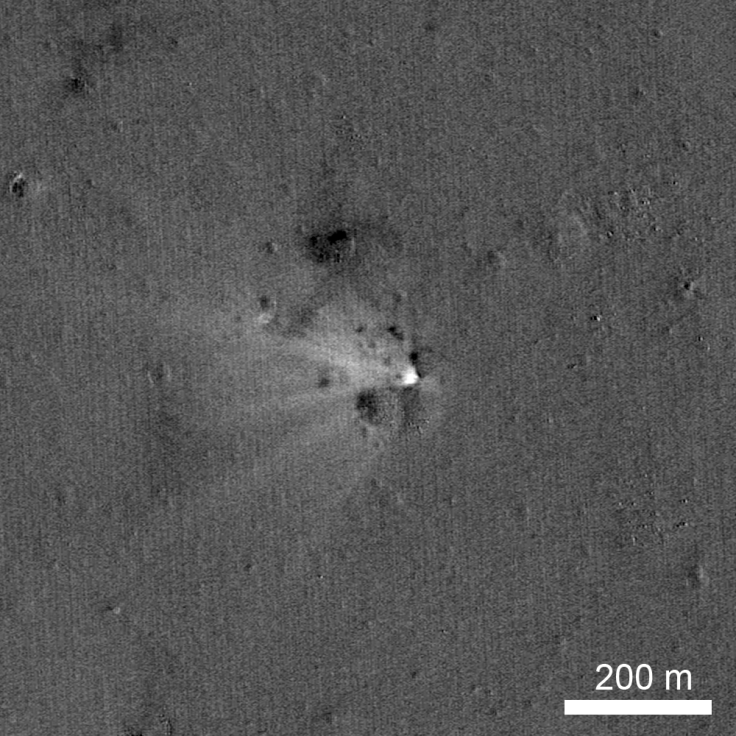NASA Crashed Probe Into Dark Side Of The Moon, Then Returned To Take Pictures Of The Impact

NASA announced Thursday that it has found an exploration device on the dark side of the Moon after intentionally crashing it there earlier this year. The discovery comes six months after the Lunar Atmosphere and Dust Environment Explorer (LADEE) was deliberately steered into the Moon when a research mission didn’t go as planned.
LADEE lifted off from the Virginia coast in September 2013 and, by the next month, was orbiting the Moon, surveying its dust and atmospheric conditions. When the time came to return to Earth in April, though, the engines proved too weak to make the trip, making it an easy decision for scientists to slowly crash the probe on the dark side of the moon, ensuring the 844-pound craft wouldn’t interfere with potential Apollo landing areas.
Even more impressive, though, is that NASA was able to find the LADEE’s remains in an impact crater measuring less than ten feet in diameter. A Lunar Reconnaissance Orbiter Camera (LROC), developed to take close-up images of the Moon, was used to locate the LADEE’s final resting place.
Mark Robinson, a principal LROC investigator who works with NASA out of Arizona State University, said in a statement that the crash investigation was “a fun test” to determine how precisely the LROC could scan the surface.
“As it turns out there were several small surface changes found in the predicted area of the impact, the biggest and most distinctive was within 968 feet (295 meters) of the spot estimated by the LADEE operations team,” he said.
Meanwhile, the rest of the space world has kept its telescope focused on Orbital Sciences, the space technology company that made headlines Tuesday evening when one of its cargo ships meant for the International Space Station exploded six seconds after liftoff. That incident, like the NASA probe’s crash, doesn’t seem to have affected the research community’s resolve.
“When you’re pushing science and engineering you will have failures,” Maj. Gen. Jay Lindell, former director of the Air Force Global Power Programs, told the International Business Times, “but you’ve just got to keep going.”
© Copyright IBTimes 2024. All rights reserved.





















